Abstract
1 The effects of intravenous administration of the selective alpha 2-adrenoceptor agonists clonidine, UK 14,304 and guanoxabenz on rat pupil diameter were investigated. 2 In rats anaesthetized with pentobarbitone, each agonist produced a marked dose-related increase in pupil diameter; the rank order of potency was: clonidine greater than UK 14,304 greater than guanoxabenz. 3 Pretreatment with the selective alpha 2-adrenoceptor antagonist, RX 781094 (0.5 mg/kg, i.v.), produced a parallel 30-40 fold shift to the right of the dose-pupil dilator response curves for the three agonists. Yohimbine (1.5 mg/kg, i.v.) produced about a 10 fold rightward shift of the dose-response curve for guanoxabenz. In contrast, the alpha 1-selective antagonist, prazosin (0.5 mg/kg, i.v.), failed to affect the dose-response relation for guanoxabenz. 4 Several antagonists of varying selectivities towards alpha 1- and alpha 2-adrenoceptors were tested for their ability to reverse the maximal mydriasis induced by guanoxabenz (0.3 mg/kg, i.v.). The rank order of potency of the antagonists producing a 50% reversal of this effect was: RX 781094 greater than yohimbine greater than piperoxan = rauwolscine greater than mianserin greater than RS 21361. Neither corynanthine nor prazosin reversed the guanoxabenz-induced mydriasis. 5 Topical application of RX 781094 (0.1 to 3% w/v solutions) onto one eye produced a slow reversal of guanoxabenz-induced mydriasis; the time course and degree of reversal were virtually the same in both eyes. 6 Intracerebroventricular administration of RX 781094 (1.25-15 micrograms total dose) caused a rapid dose-related reversal of the maximal mydriasis induced by guanoxabenz (0.3 mg/kg, i.v.). 7 Guanoxabenz (0.3 and 1.0 mg/kg, i.v.) did not produce any dilation of the physostigmine-constricted undamaged pupil of the pithed rat. Intravenous adrenaline was found to produce a small mydriatic effect, while atropine completely antagonized the effects of physostigmine in this preparation. 8 These results indicate that alpha 2-adrenoceptor agonists induce mydriasis in the rat through a central alpha 2-adrenoceptor mechanism. However, the site of action within the central nervous system remains to be determined.
Full text
PDF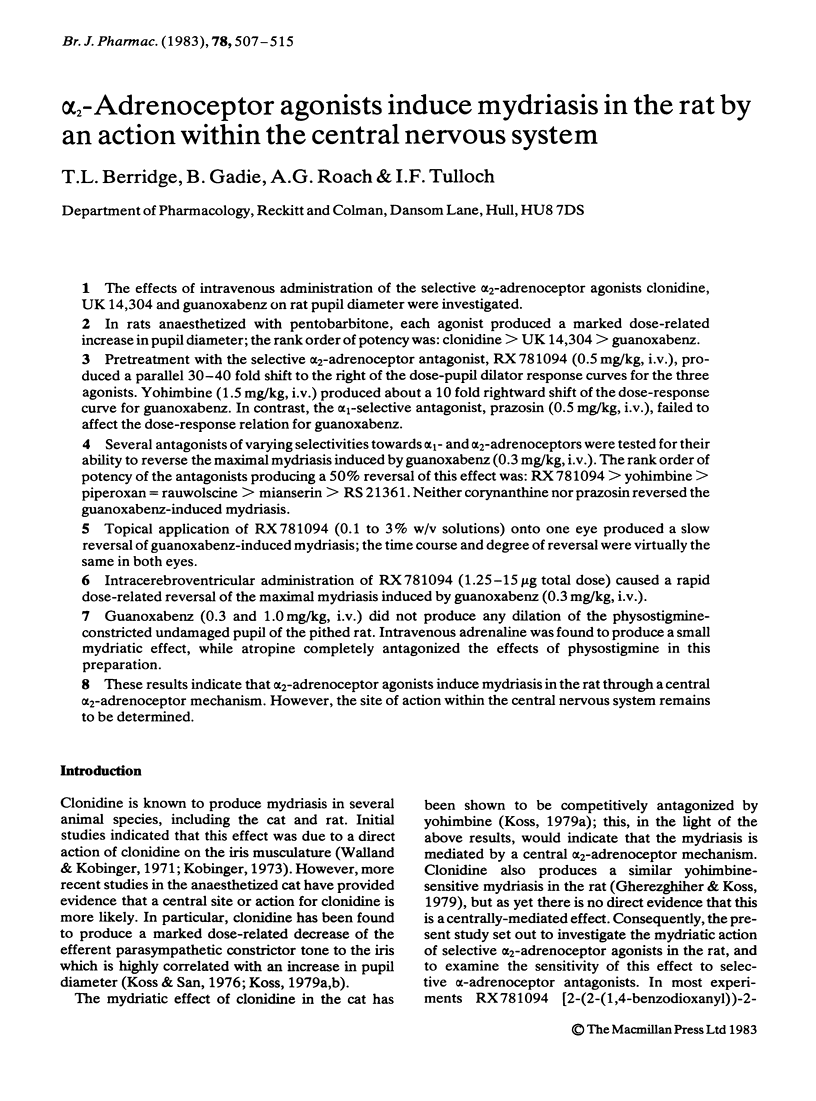
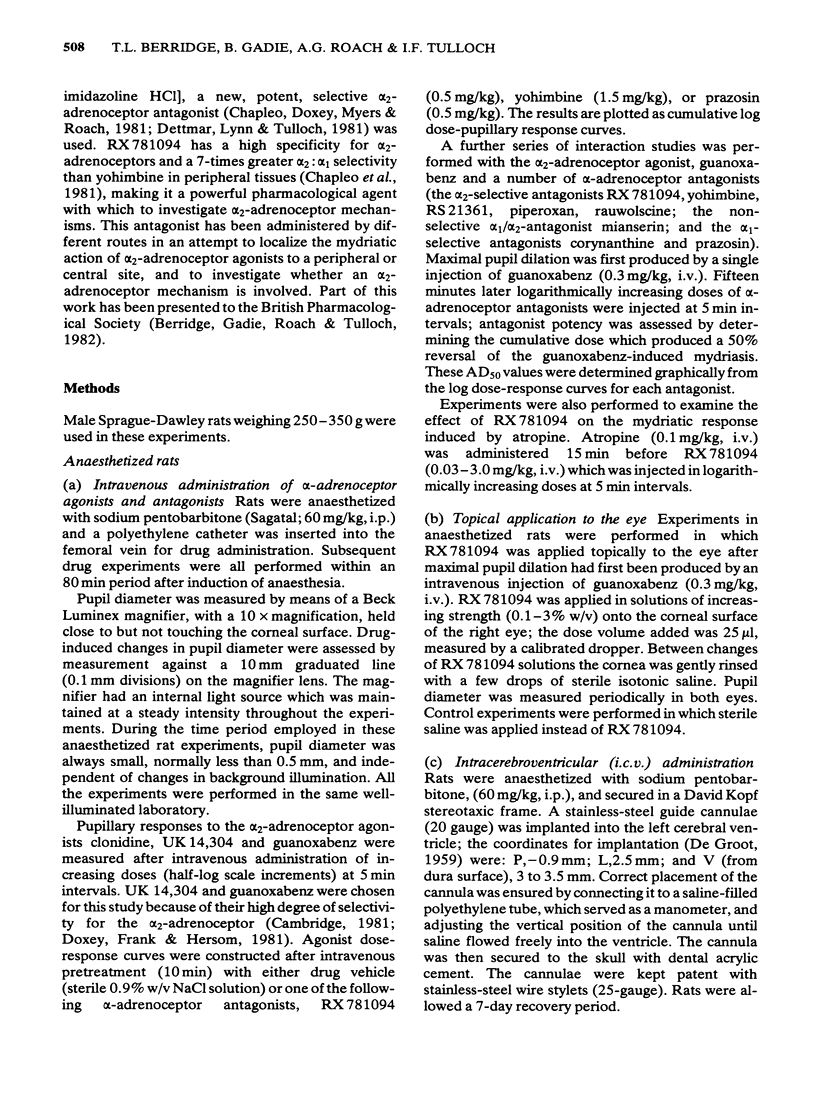
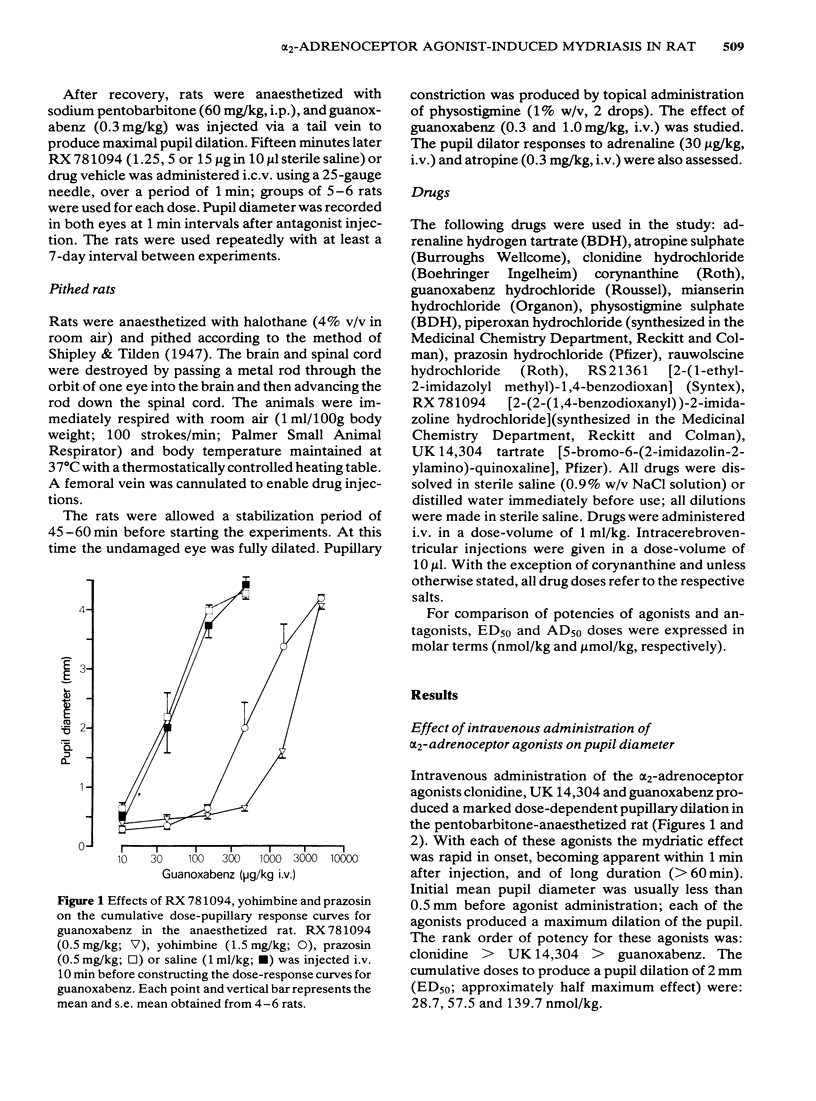
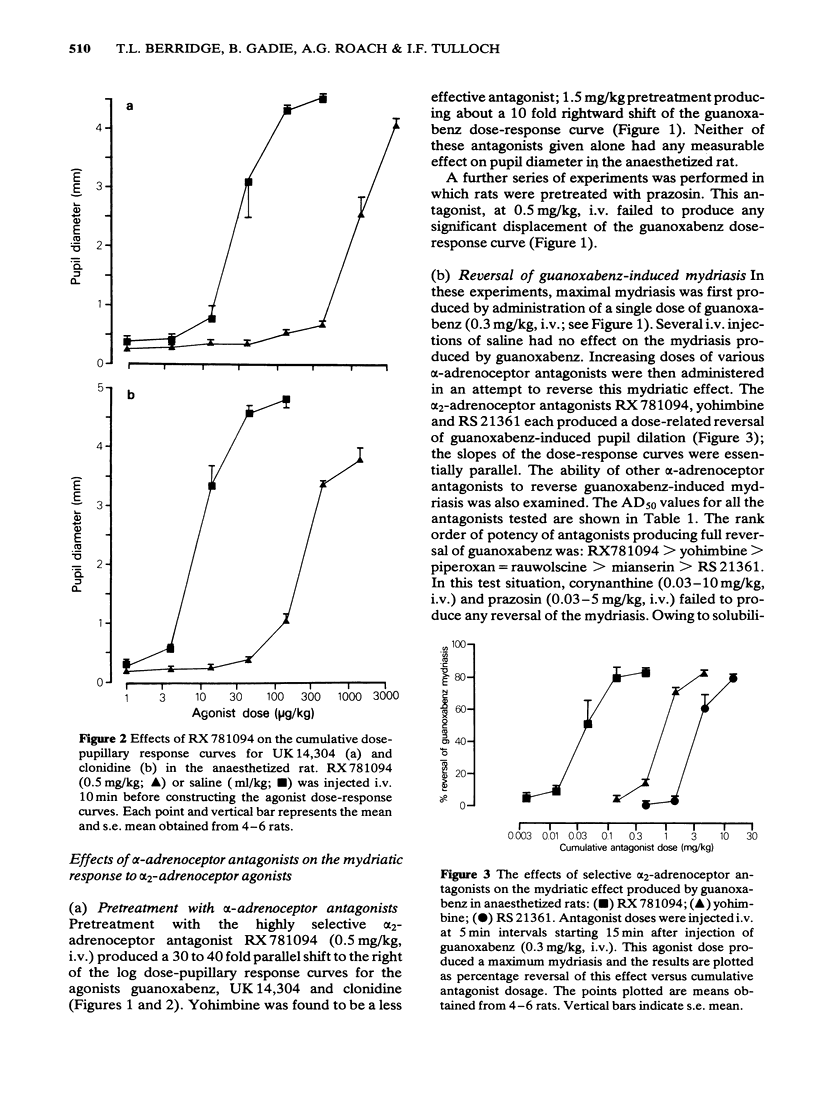
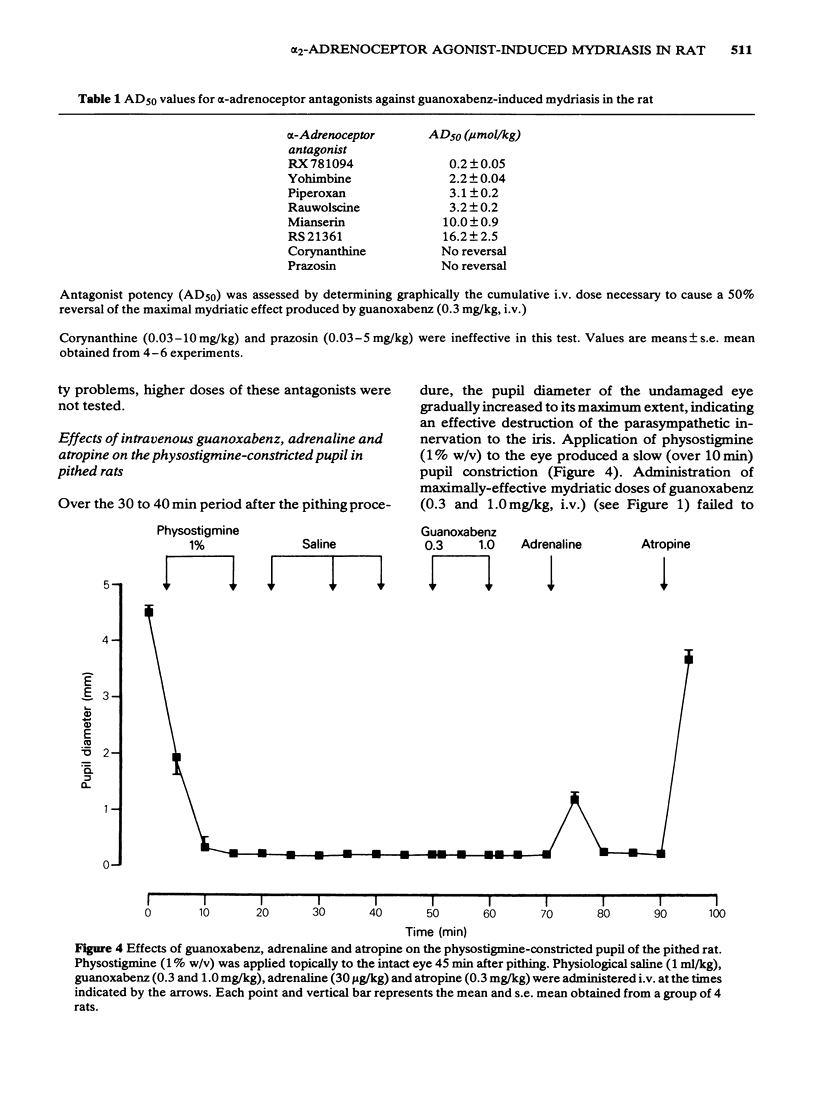
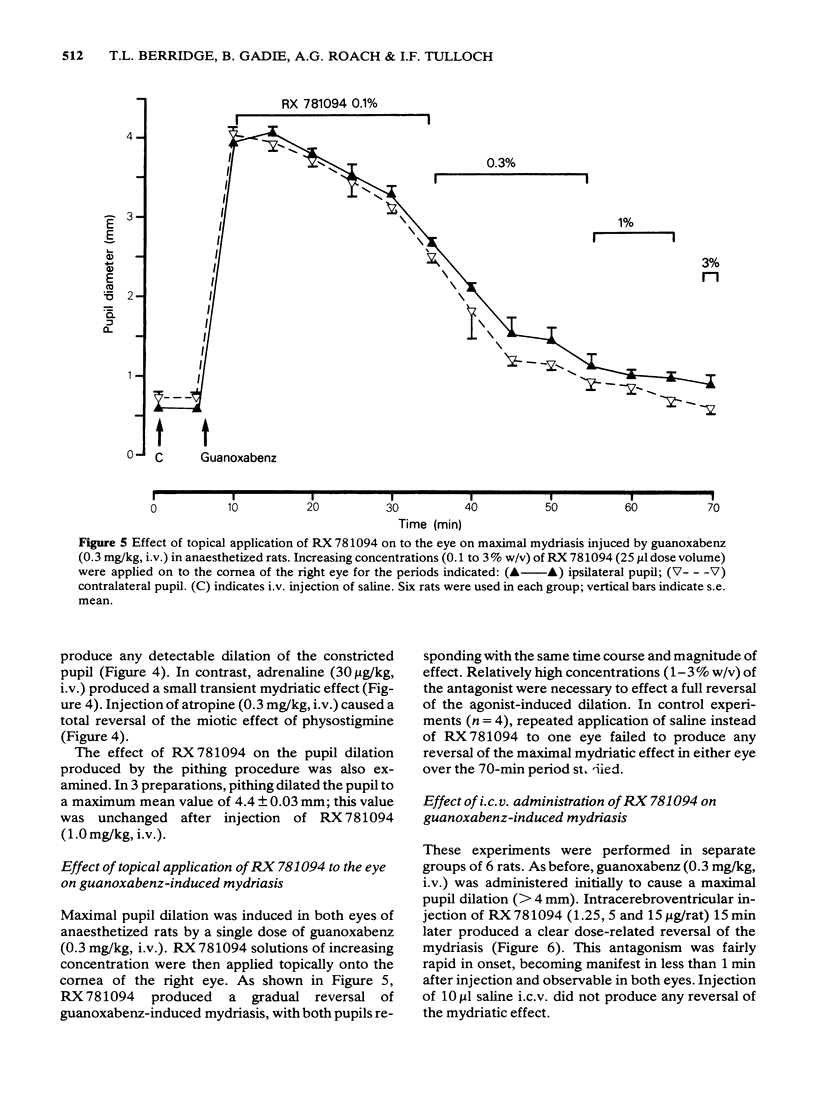
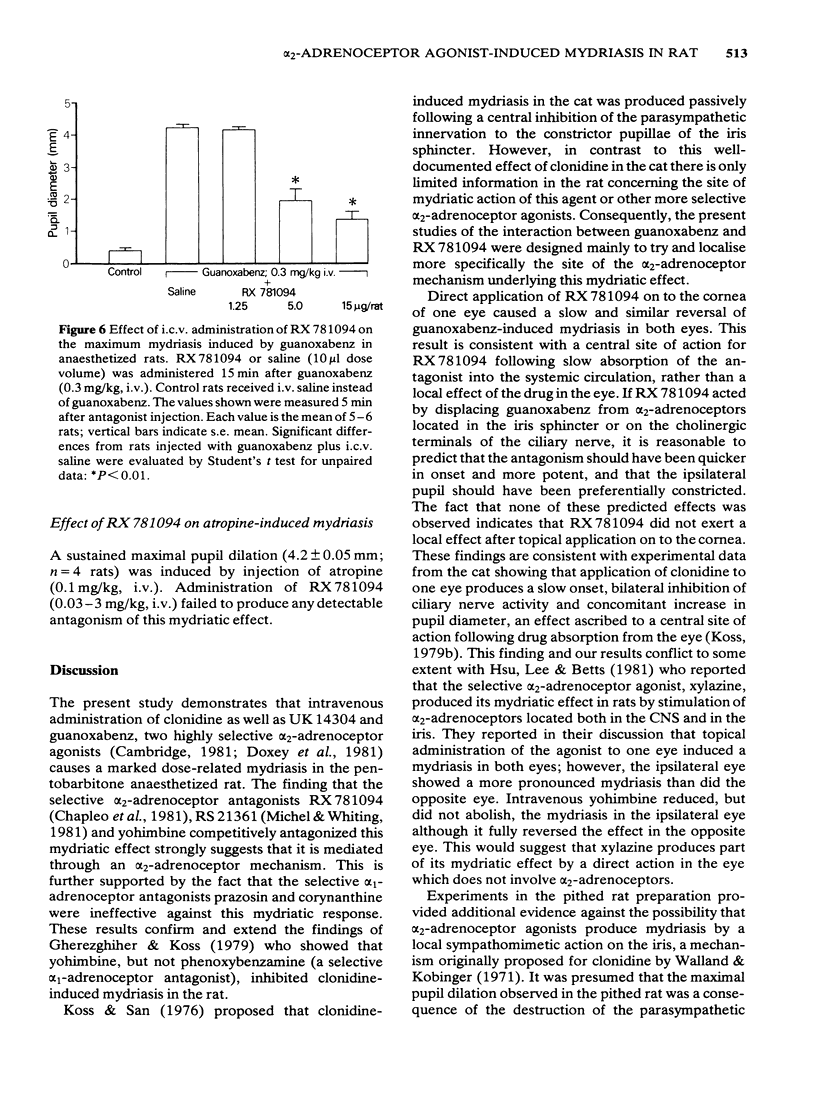
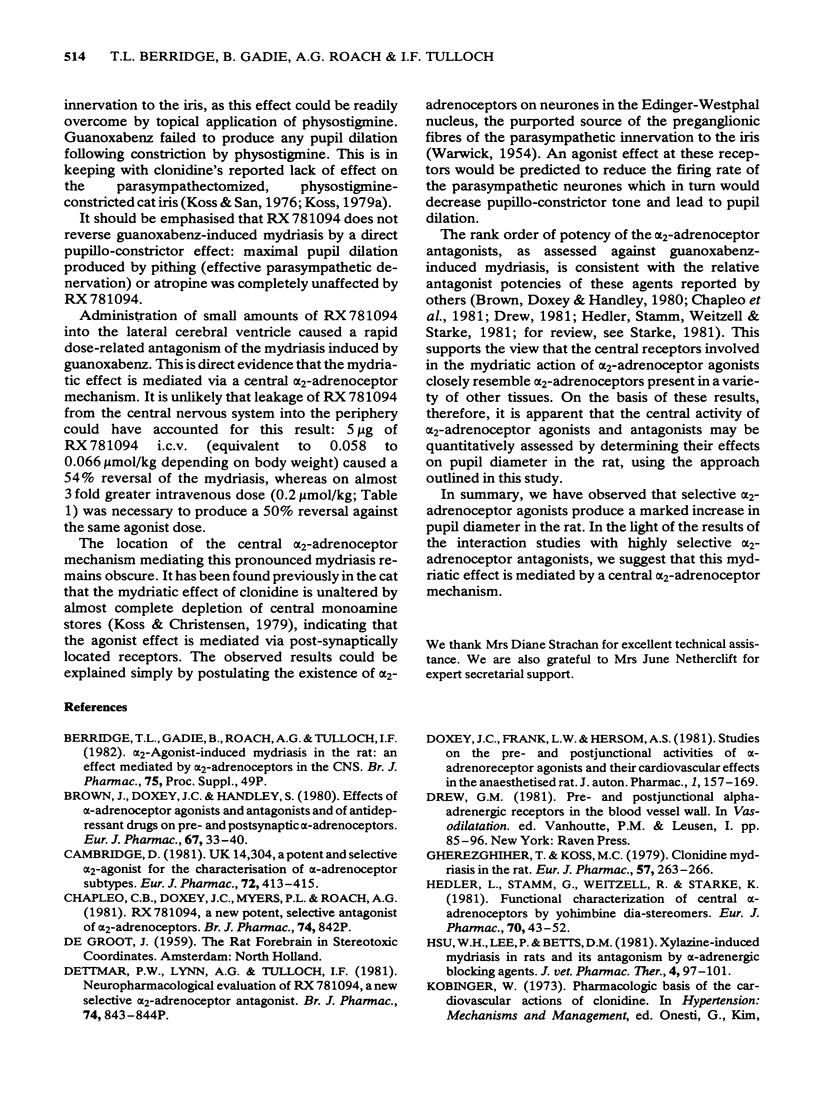
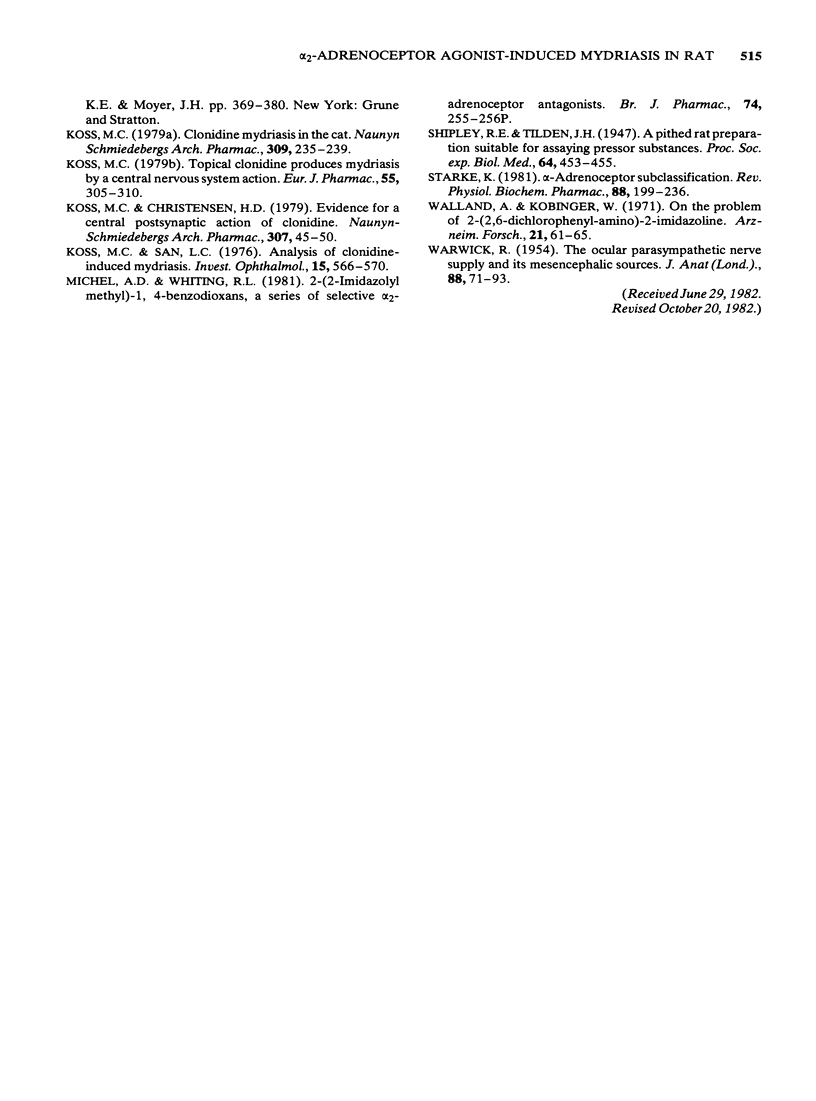
Selected References
These references are in PubMed. This may not be the complete list of references from this article.
- Brown J., Doxey J. C., Handley S. Effects of alpha-adrenoceptor agonists and antagonists and of antidepressant drugs on pre- and postsynaptic alpha-adrenoceptors. Eur J Pharmacol. 1980 Oct 3;67(1):33–40. doi: 10.1016/0014-2999(80)90005-9. [DOI] [PubMed] [Google Scholar]
- Cambridge D. UK-14,304, a potent and selective alpha2-agonist for the characterisation of alpha-adrenoceptor subtypes. Eur J Pharmacol. 1981 Jul 10;72(4):413–415. doi: 10.1016/0014-2999(81)90588-4. [DOI] [PubMed] [Google Scholar]
- Doxey J. C., Frank L. W., Hersom A. S. Studies on the pre- and postjunctional activities of alpha-adrenoreceptor agonists and their cardiovascular effects in the anaesthetized rat. J Auton Pharmacol. 1981 Mar;1(2):157–169. doi: 10.1111/j.1474-8673.1981.tb00508.x. [DOI] [PubMed] [Google Scholar]
- Gherezghiher T., Koss M. C. Clonidine mydriasis in the rat. Eur J Pharmacol. 1979 Aug 1;57(2-3):263–266. doi: 10.1016/0014-2999(79)90376-5. [DOI] [PubMed] [Google Scholar]
- Hedler L., Stamm G., Weitzell R., Starke K. Functional characterization of central alpha-adrenoceptors by yohimbine diastereomers. Eur J Pharmacol. 1981 Mar 5;70(1):43–52. doi: 10.1016/0014-2999(81)90430-1. [DOI] [PubMed] [Google Scholar]
- Hsu W. H., Lee P., Betts D. M. Xylazine-induced mydriasis in rats and its antagonism by alpha-adrenergic blocking agents. J Vet Pharmacol Ther. 1981 Jun;4(2):97–101. doi: 10.1111/j.1365-2885.1981.tb00717.x. [DOI] [PubMed] [Google Scholar]
- Koss M. C., Christensen H. D. Evidence for a central postsynaptic action of clonidine. Naunyn Schmiedebergs Arch Pharmacol. 1979 May;307(1):45–50. doi: 10.1007/BF00506550. [DOI] [PubMed] [Google Scholar]
- Koss M. C. Clonidine mydriasis in the cat. Further evidence for a CNS postsynaptic action. Naunyn Schmiedebergs Arch Pharmacol. 1979 Nov;309(3):235–239. doi: 10.1007/BF00504755. [DOI] [PubMed] [Google Scholar]
- Koss M. C., San L. C. Analysis of clonidine-induced mydriasis. Invest Ophthalmol. 1976 Jul;15(7):566–570. [PubMed] [Google Scholar]
- Koss M. C. Topical clonidine produces mydriasis by a central nervous system action. Eur J Pharmacol. 1979 May 1;55(3):305–310. doi: 10.1016/0014-2999(79)90198-5. [DOI] [PubMed] [Google Scholar]
- Starke K. Alpha-adrenoceptor subclassification. Rev Physiol Biochem Pharmacol. 1981;88:199–236. [PubMed] [Google Scholar]
- WARWICK R. The ocular parasympathetic nerve supply and its mesencephalic sources. J Anat. 1954 Jan;88(1):71–93. [PMC free article] [PubMed] [Google Scholar]
- Walland A., Kobinger W. On the problem of tolerance of 2-(2,6-dichlorophenylamino)-2-imidazoline. Arzneimittelforschung. 1971 Jan;21(1):61–65. [PubMed] [Google Scholar]


